
 |
HOME |
An Apiarist's Bees
PART FOUR |
||||
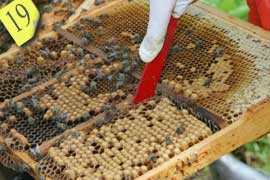 Using his Hive Tool, Don starts to cut out the brood comb that has been affected. |
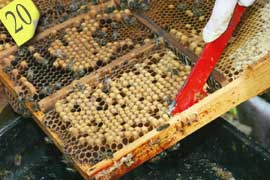 The comb requires a lot of effort to remove as the worker bees use propolis,a resinous substance collected by the bees from leaf buds and tree bark, to glue the comb to the frame. Propolis also has antibiotic properties and helps to eliminate viruses and bacteria from the hive. |
||||
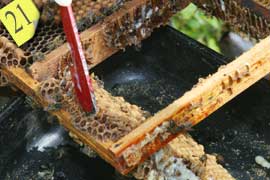 Wax larvae have huge appetites doubling their weight in the first ten days of life. |
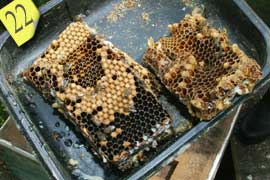 An adult Greater Wax Moth that has sneaked into the hive can lay up to 1,800 eggs. |
||||
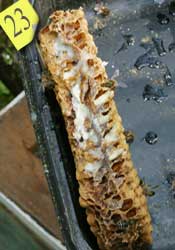 This piece of comb seen side-on shows how substantially it has grown from the thin piece of Wax Foundation provided for the bees at start-up. The pieces cut-out will be destroyed. |
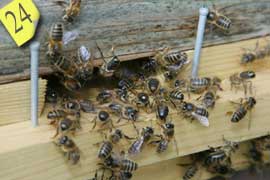 There is only one entrance to the hive and this is located at the bottom of the brood box at the base of the hive. The size of the entrance can be adjusted to allow for flight activity and aid in ventilation. Worker bees posted at the entrance will attack any intruders they regard as being a threat to the brood. |
||||
| NEXT | |||||
| Suggest a topic for another Wey River photo-essay |
|||||